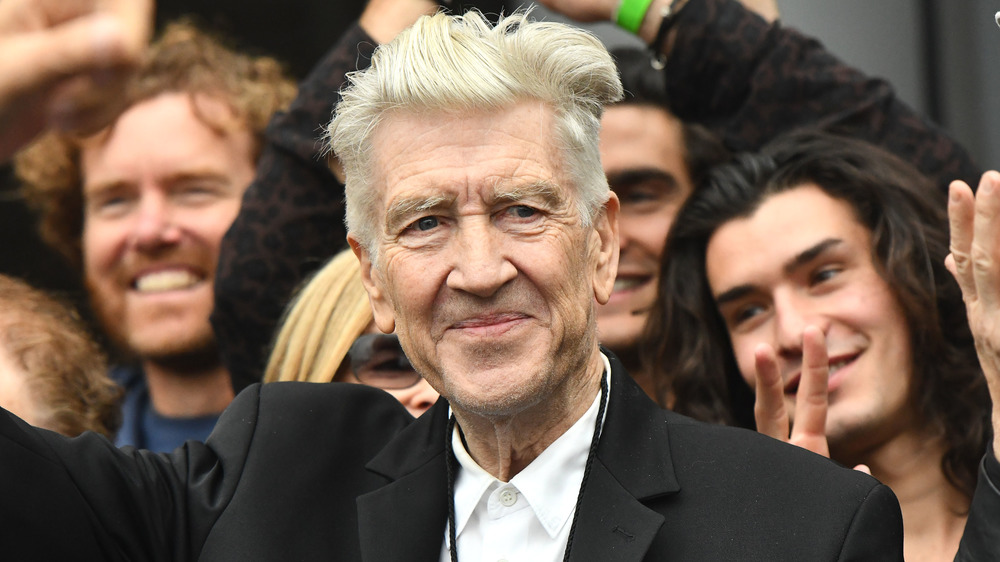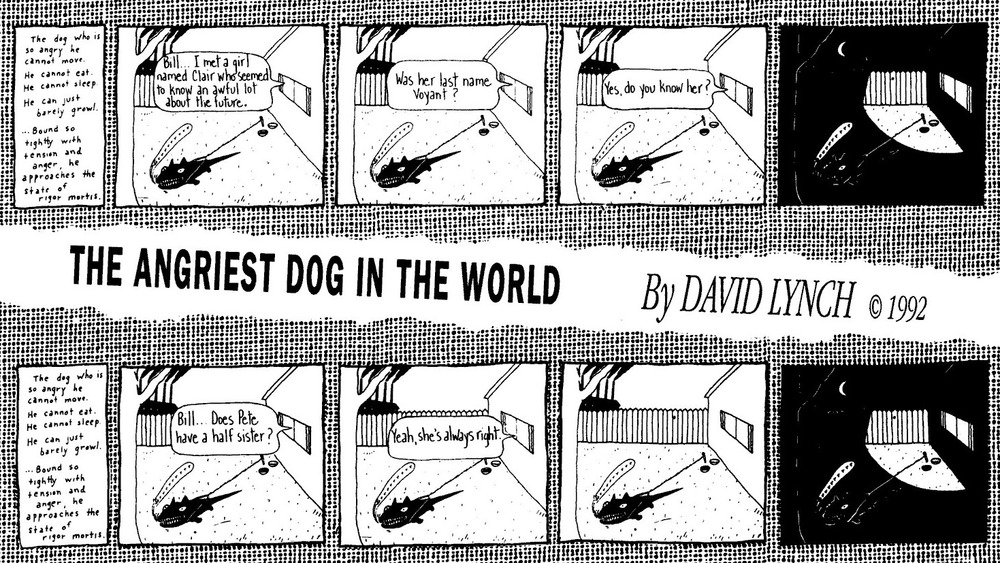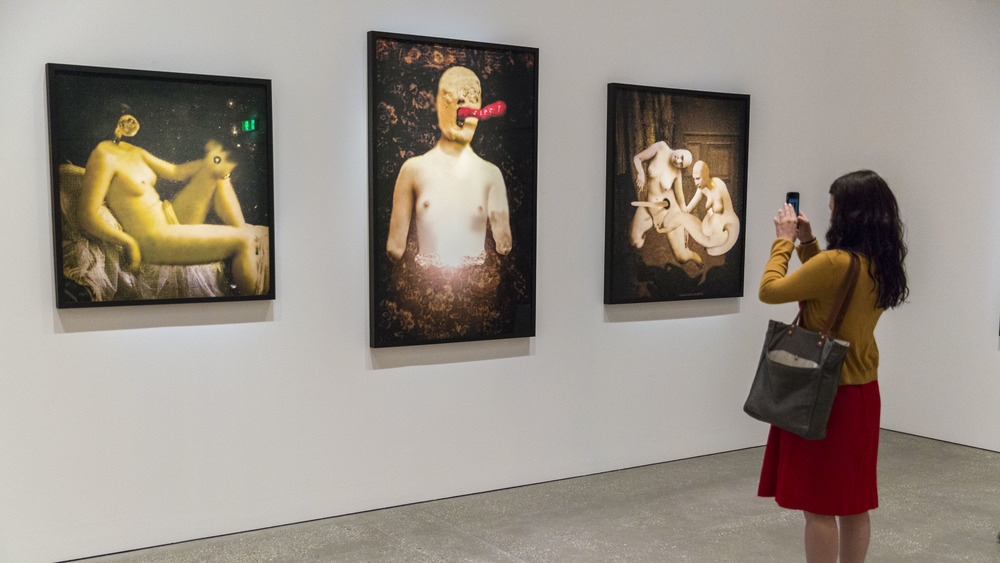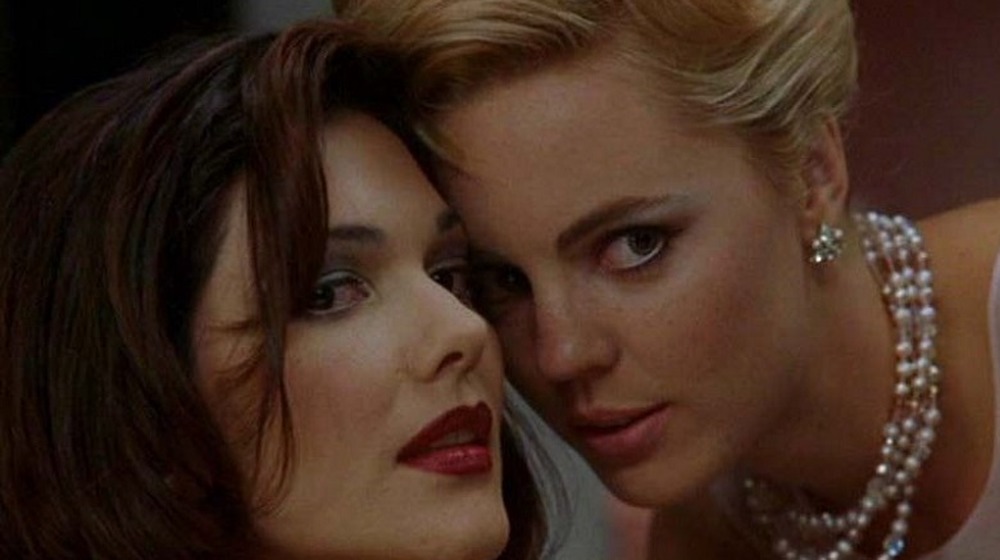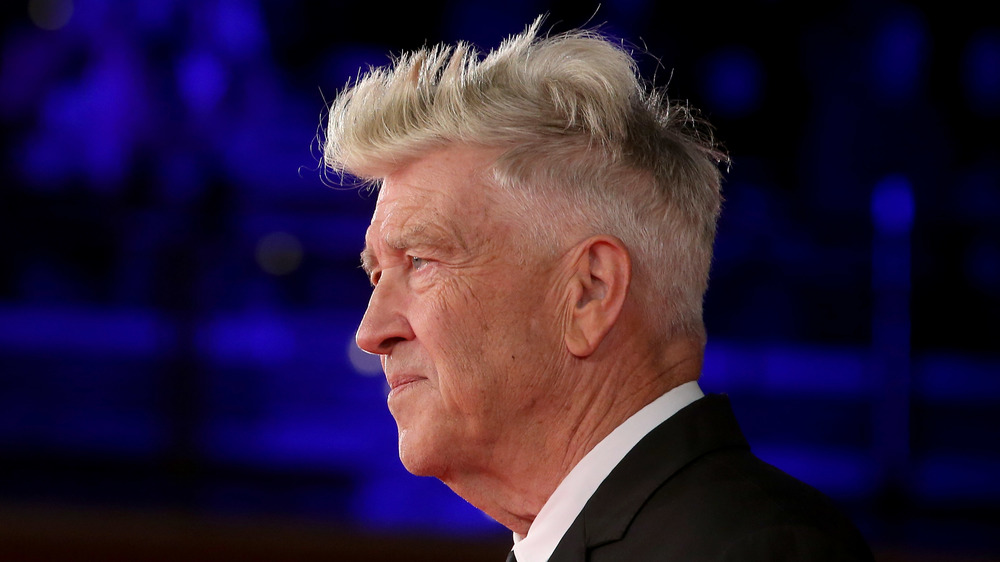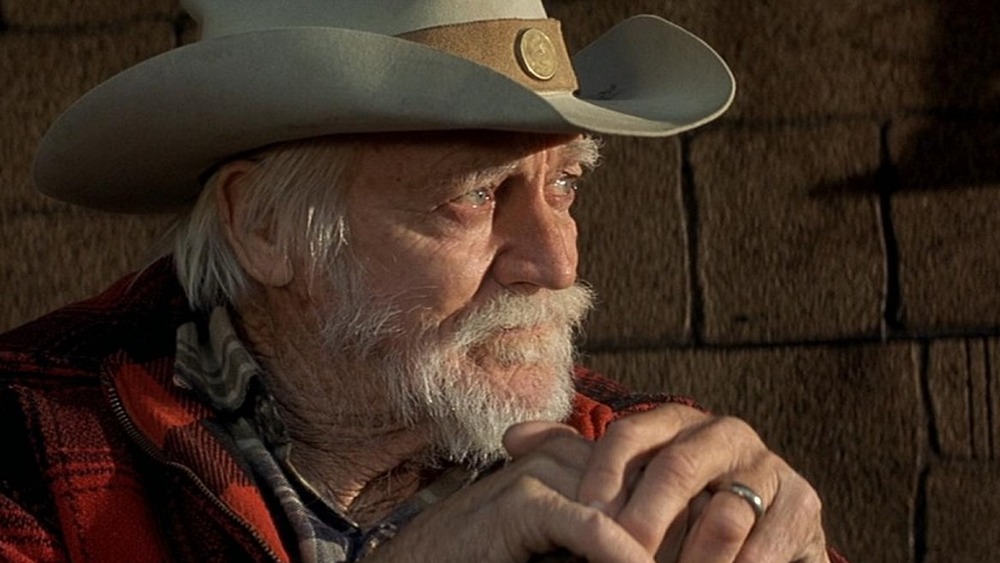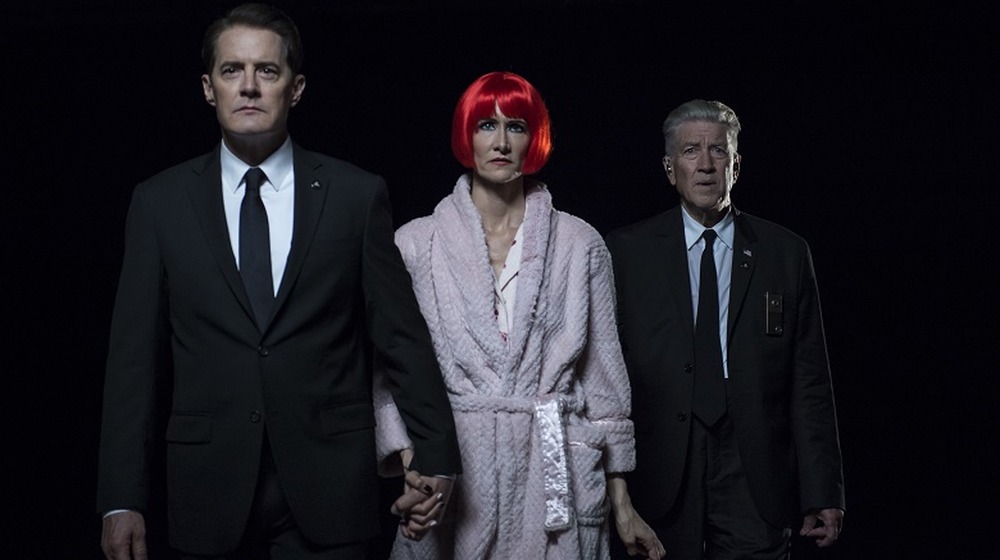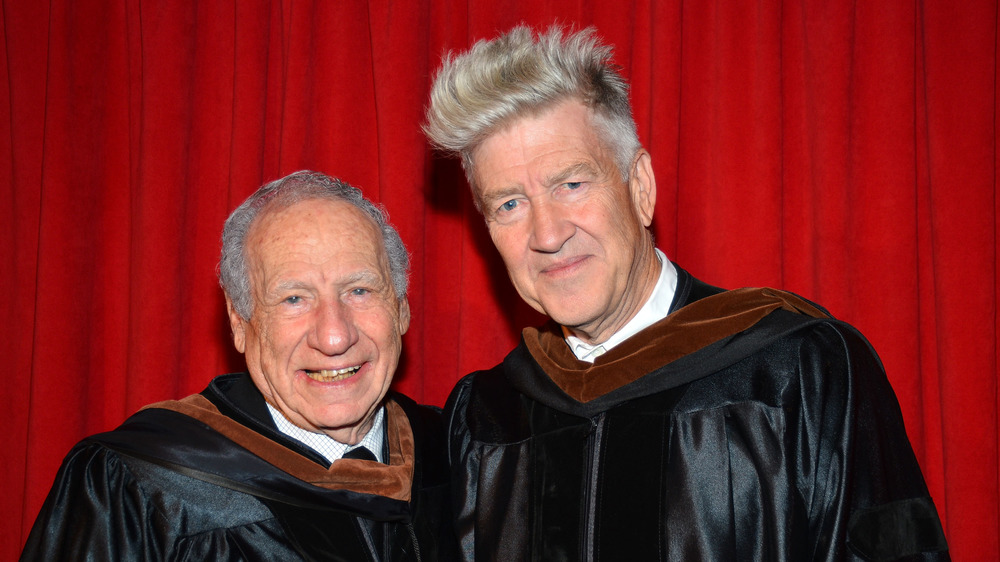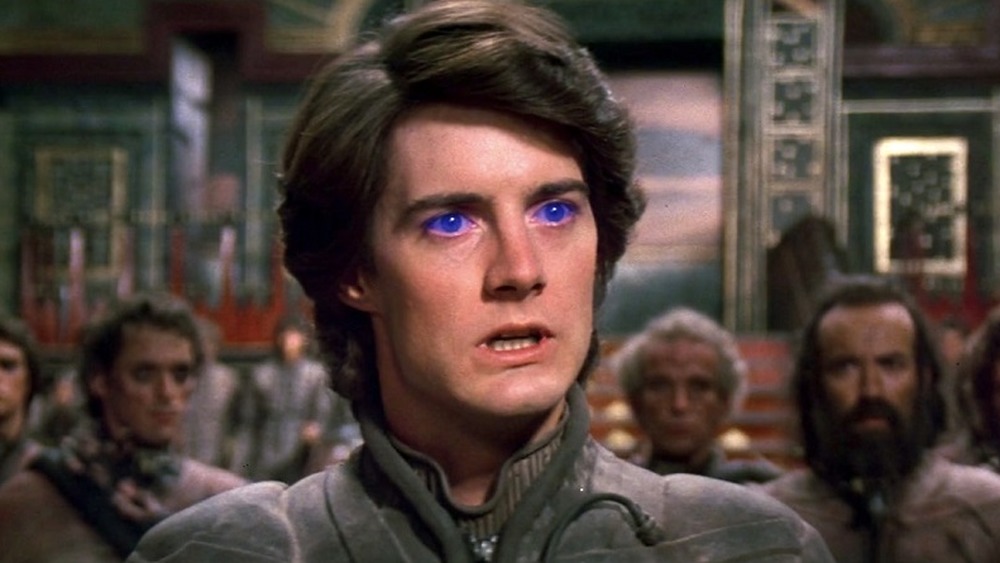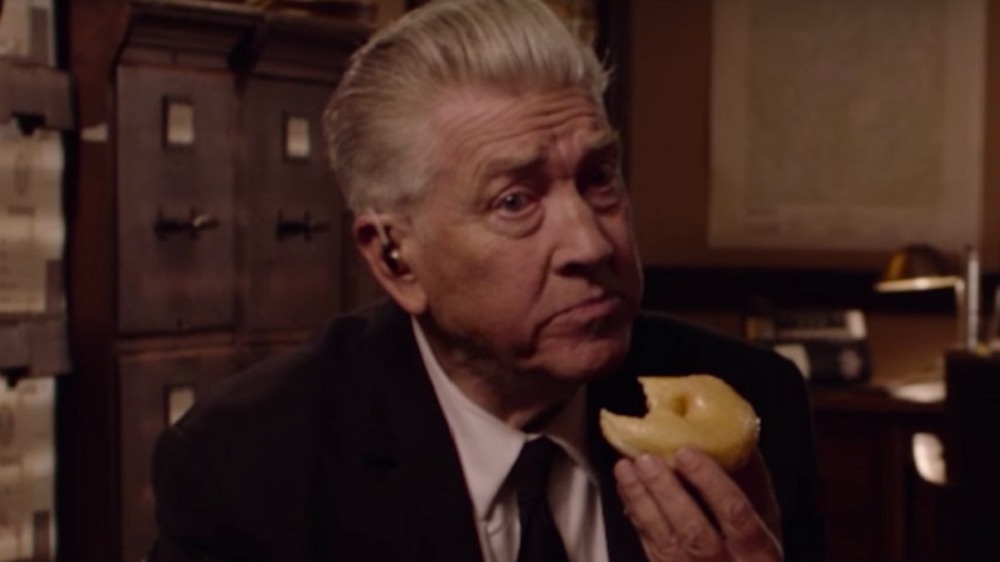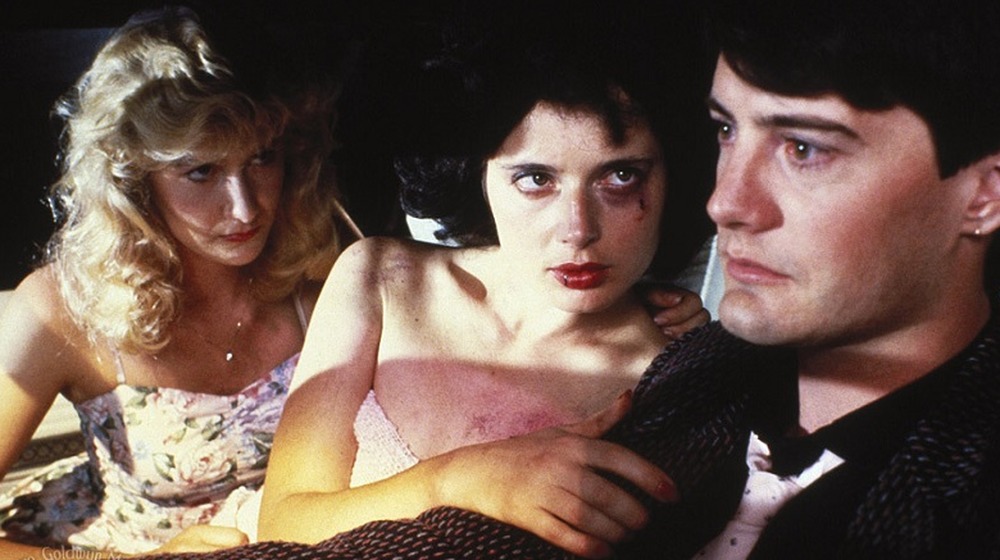The Untold Truth Of David Lynch
David Lynch is known for his huge cult following as much as he's known for his movies. Eraserhead established him as an innovative and daring director who isn't afraid of experimenting with the form, or delving into the most disturbing parts of the human subconscious. Blue Velvet rips away the pleasant veneer of suburbia and reveals its ugly reality. Mullholland Drive is a bewildering, hypnotic excursion into dream logic. The TV show Twin Peaks, co-created with Mark Frost, mixes surreal comedy, a compelling murder mystery, and flat-out weirdness into one of the modern day's most influential TV shows. Then he returned 25 years later to do an even stranger third season. At the same time, Lynch put out a big-budget science-fiction film in Dune and a G-rated road film, The Straight Story.
But Lynch has never just been a director. His background is in painting. He had a comic strip published in many alternative newspapers in the 1980s. He's a musician, a writer, and an actor. An early adopter of the internet, Lynch has released a number of short films there and even does a daily weather report on his YouTube channel. Lynch is a hard man to pin down and an artist who is impossible to pigeonhole, both with regard to the content he makes and the form that it takes. This is everything you don't know about the enigmatic artist.
David Lynch, newspaper cartoonist
From 1983 to 1992, Lynch did a comic strip that appeared in the L.A. Reader and other alternative weeklies called The Angriest Dog in the World. Each strip begins with the following caption: "The dog who is so angry he cannot move. He cannot eat. He cannot sleep. He can just barely growl. Bound so tightly with tension and anger, he approaches the state of rigor mortis."
Lynch conceived the idea for the strip a decade earlier and started doodling the dog while making Eraserhead in the late '70s. One of the central jokes of the strip is that the same four panels are repeated in each one: The only thing that differs, and presumably causes the dog's anger, are the statements from the house that the dog overhears outside. These statements range from dumb jokes to deep thoughts to utter nonsense.
Like most of Lynch's projects, The Angriest Dog in the World is directly related to certain themes. Here, those themes include dream logic, repressed emotions, and a merger of form and function. Just as Eraserhead makes its use of noise something the viewer can't ignore, so too does this strip push the boundaries of what is understood to be a "funny" comic. As always, Lynch was ahead of his time: The humor of the strip is very much in line with the repetitive nature of the modern meme.
The paintings of David Lynch
In his autobiography, Room To Dream, Lynch remarks, "I miss painting when I'm not painting." Trained as a painter at the Pennsylvania Academy Of Fine Arts, one of his key early works is 1967's Six Men Getting Sick. It anticipates the rest of his career as a multimedia piece, incorporating "painting, sculpture, sound, film, and installation." In contrast to his often brightly-lit films, Lynch's paintings use dark, muted tones to explore his usual subjects: The human body and horror related to it, the idea of threats to home, and the logic of dreams and nightmares. His first American retrospective, "The Unified Field," was held at PAFA in 2015, recreating the original installation as well as incorporating paintings, drawings, and short films from that era.
In 2019, Lynch had a show at Holland's Bonnefantenmuseum, entitled "Someone is in my House." Citing the painter Francis Bacon as an influence, Lynch's paintings offer up distorted, dark figures that are strangely beautiful. Talking about the exhibit, Lynch said, "We know things that are going on. Not in every house, but enough. Things that we can't even imagine are going on ...There is goodness in blue skies and flowers, but another force — a wild pain and decay — also accompanies everything." This description of his paintings also explicitly addresses the themes of Blue Velvet, Twin Peaks, and Mullholland Drive, in which we know something's rotten below the surface but we can't quite put our finger on it.
The long road to Mulholland Drive
In Paul A. Woods' book Weirdsville USA: The Obsessive Universe Of David Lynch, he notes that even though Lynch was reluctant to work on television again after his show On The Air was canceled, he was drawn back because "of a really strong desire to tell a continuous story in which you go deeper and deeper into that world and you really get lost in that world ... you feel all these threads going out into the infinite, which, to me, is a beautiful thing."
The TV pilot he eventually made in 1998 for ABC was called Mulholland Drive. It was inspired by Goddess, a failed pilot he had written with Mark Frost, based on the death of Marilyn Monroe. Lynch liked the idea of doing a project set in Hollywood with a beautiful, mysterious woman and a perky actress trying to get her big break. Talk swirled briefly of a Twin Peaks spin-off starring Sherilyn Fenn's Aubrey Horne character, but it didn't come to pass. As Fenn put it, however, this concept "ended up being the original idea for Mulholland Drive."
Lynch cast Naomi Watts as the aspiring actress and Laura Elena Harring as the mystery woman. The show wound up being too weird, long, and violent for ABC, and they passed. When a studio bought the rights, Lynch added some new scenes and turned it into a movie, for which he won Best Director at Cannes.
David Lynch, musician
Lynch's interest in music initially had more to do with experimental noise, evidenced in his early multimedia pieces and the sounds of Eraserhead. In the mid-'80s, he started collaborating with the composer Angelo Badalamenti on the score for Blue Velvet and later for Twin Peaks. Lynch wrote the lyrics for singer Julee Cruise on songs like "Falling," which became the theme for the show and also appeared on her album Floating Into The Night. Music from Twin Peaks was such a large part of the cultural landscape at the time that artists as different as Anthrax and Moby put their own spin on it, with the latter folding it into his dance number, "Go." This legacy continues into the modern day: Bastille's first album contains a song entitled "Laura Palmer."
Lynch and Badalamenti later put together a jazz band called Thought Gang in the early '90s, but their album wasn't released until 2018. An inveterate storyteller, Lynch would tell tales to his bandmates in an effort to get the kind of sound he wanted. In 2001, he collaborated with guitarist John Neff for a project called Blue Bob. Lynch played guitar and used a variety of effects pedals and other devices to create a weird, crunchy, earthy sound. Shy in public, Lynch actually played a single live gig in support of the album, at Paris' famous Olympia Theater. He generally declines offers to play more live shows.
Telling a straight story
Lynch jokingly refers to the G-rated The Straight Story as "my most experimental film." Based on the real journey of 73-year-old Alvin Straight, the film details his 300-mile trek to see his estranged brother Lyle, who has just suffered a stroke. Because of his own health issues, Straight makes the journey riding a John Deere lawnmower. It's the sort of absurd image that Lynch has always treasured in his films, but Lynch did little to embellish the actual events, and faithfully adapted the screenplay, which he didn't write.
One reason the movie is unusual is that it was filmed in chronological order, along the same path that Straight originally took. Lynch's affection for American road movies is clear in Wild At Heart and later in Twin Peaks: The Return, but the dark and distorted qualities of those films are nowhere to be found in this entirely sincere story of a man looking to put his affairs in order. He and the people he meets along the way all learn things from each other, or at least provide a sympathetic ear.
Straight was played by 79-year-old former stuntman Richard Farnsworth. Unbeknownst to most, he was battling terminal cancer at the time of filming and endured a great deal of pain. He worked through it and became the oldest man to be nominated for a Best Actor Oscar before he died.
Twin Peaks lives, dies, and is reborn
Of all of Lynch's projects, none have more pop culture cachet than Twin Peaks. Set in a small northwestern town, it follows FBI agent Dale Cooper as he delves into a web of intrigue and mystery surrounding the murder of homecoming queen Laura Palmer. Co-created with Mark Frost, it has all the typical hallmarks of a Lynch project: Surreal, haunting imagery, the secrets hidden in seemingly perfect small towns, horrific trauma, and frequently absurd humor.
Lynch was less connected to the show in its second season, as he was making Wild At Heart, and it loses its way in more trivial storylines after Laura Palmer's murderer is revealed. He did, however, return for the astounding season finale, wherein Cooper is trapped in the nightmarish Black Lodge, his body possessed by the evil spirit that murdered Laura. It was an unprecedented bit of horrifying, surreal storytelling for TV of the time, and left its viewers with a cruel cliffhanger.
In the Black Lodge, Cooper meets Laura, who tells him, "I'll see you again in 25 years." 26 years later, a third season of Twin Peaks debuted on Showtime, subtitled The Return. Lynch directed each of the 18 episodes, with the eighth being especially memorable and disturbing. Its use of noise and stark imagery is reminiscent of Lynch's earliest work, as he reveals the atomic bomb created BOB, the series' demonic villain.
David Lynch And Mel Brooks make The Elephant Man
In a truly momentous meeting of minds, comedy legend Mel Brooks hired David Lynch to direct the film adaptation of The Elephant Man, based on the true story of Joseph Merrick. After traveling as part of sideshow exhibits, Merrick lived much of his life in London Hospital, receiving many famous visitors. While Brooks is known for his edgy and sometimes coarse humor, he is also a public intellectual, and could teach a Russian literature course at many universities as deftly as he makes movies.
Brooks took on the project with his Brooksfilms studios. "I think most of my movies are serious," he noted in 1982, "they have their roots in some terrible things." Working on dramas, especially those that had trouble getting traction at other studios, was one of his goals. At the urging of a producer friend of his, he saw Lynch's Eraserhead and was impressed by how "Lynch could deal very primitively and surrealistically with human feelings." He thought that Lynch could "make us confront the ugliness of the man without artifice."
Before he took the job, Lynch suggested some changes that would alter certain real world events, to make the story flow better. He convinced Brooks of his approach as they met at a Bob's Big Boy, wearing a leather jacket and looking like a "young Charles Lindbergh." The film was a commercial and critical success and helped further Lynch's career in a big way.
Dune sees Lynch compromise his vision
Lynch followed up his success with The Elephant Man by taking on a potential blockbuster tentpole franchise in Dune. He first turned down George Lucas' offer to direct Return Of The Jedi, saying, "I realized that his projects are entirely his projects, and I prefer to do my own." While he had a lot more freedom in adapting Frank Herbert's dense, philosophical sci-fi classic, he had trouble pleasing producer Dino De Laurentiis.
Lynch blamed himself as much as anyone, claiming he "started selling out on Dune." He started compromising his own vision, little by little, as he made the film. The theatrical release both oversimplified the plot and was frequently hard to follow, and the result was a huge critical and commercial bomb.
When Universal released the movie for television, they created a three-hour cut of the film that adds in a lot of deleted material. Lynch immediately disavowed this version and had his name removed from the film. "Alan Smithee" was credited as the director, and "Judas Booth" was listed as the screenwriter. That latter name is a combination of the biblical traitor Judas and Abraham Lincoln's assassin John Wilkes Booth. On the bright side, Dune saw Lynch establish relationships with star Kyle MacLachlan and other actors like Dean Stockwell that would prove to be fruitful in later years.
David Lynch steps in front of the camera
David Lynch has appeared in a surprising number of projects as an actor. He was a supporting character in the original run of Twin Peaks, playing Gordon Cole, Dale Cooper's boss at the FBI. Cole is purely comic relief, as his malfunctioning hearing aid leads to Cooper and others having to yell in order to be understood. Lynch expanded Cole's role in Twin Peaks: The Return, which probably stemmed from his more serious turn in Twin Peaks: Fire Walk With Me. Cole is a smart, dedicated agent who knows a vast amount about the mysterious "blue rose" cases that have supernatural connotations.
Lynch also appeared on the show Louie as a TV producer named Jack Dahl, who whips Louis CK into shape as a potential replacement for David Letterman on his late night show. Lynch's deadpan and absurd sense of humor is in full effect here, as his mere presence is so bizarre that it works to underline the strangeness of the situation.
Lynch has also done voice acting. He portrayed Gus, an absurdity-spouting bartender on The Cleveland Show, and even appeared on Family Guy a couple of times. How did this come about? Mike Henry, the co-creator of The Cleveland Show, asked Lynch to do it — simple as that. Lynch also had a role opposite his collaborator Harry Dean Stanton in the film Lucky. It was one of Stanton's last roles.
Bluer than velvet
Despite the failure of Dune, Dino De Laurentiis agreed to finance Lynch's next film. It sprang from an idea he had been thinking about for years, centered around a perfect little house in a seemingly perfect little town. The film was Blue Velvet, and Lynch received final cut and creative control in exchange for taking a pay cut and slashing the film's budget.
Filmed in Wilmington, North Carolina, Blue Velvet follows a young man named Jeffrey Beaumont (played by Kyle MacLachlan) who discovers a severed ear in a field. He becomes drawn into a web of vicious criminals led by a psychopath named Frank Booth (memorably portrayed by Dennis Hopper) and the woman he is blackmailing, singer Dorothy Vallens (the transcendent Isabella Rossellini). Hopper desperately wanted the part, but Lynch was reluctant, due to Hopper's history of drug and alcohol abuse. A phone call from Hopper from Lynch, in which Hopper insisted, "I am Frank Booth," clinched the deal. He turned out to be ideal as a sadistic lunatic with violent sexual fetishes.
The people of Wilmington had no clue as to the kind of film Lynch was making, so when a big crowd showed up to see a disheveled, nude Rossellini stagger through the streets, the police immediately revoked their film permit. Luckily, it was the film's final scene on the schedule.
